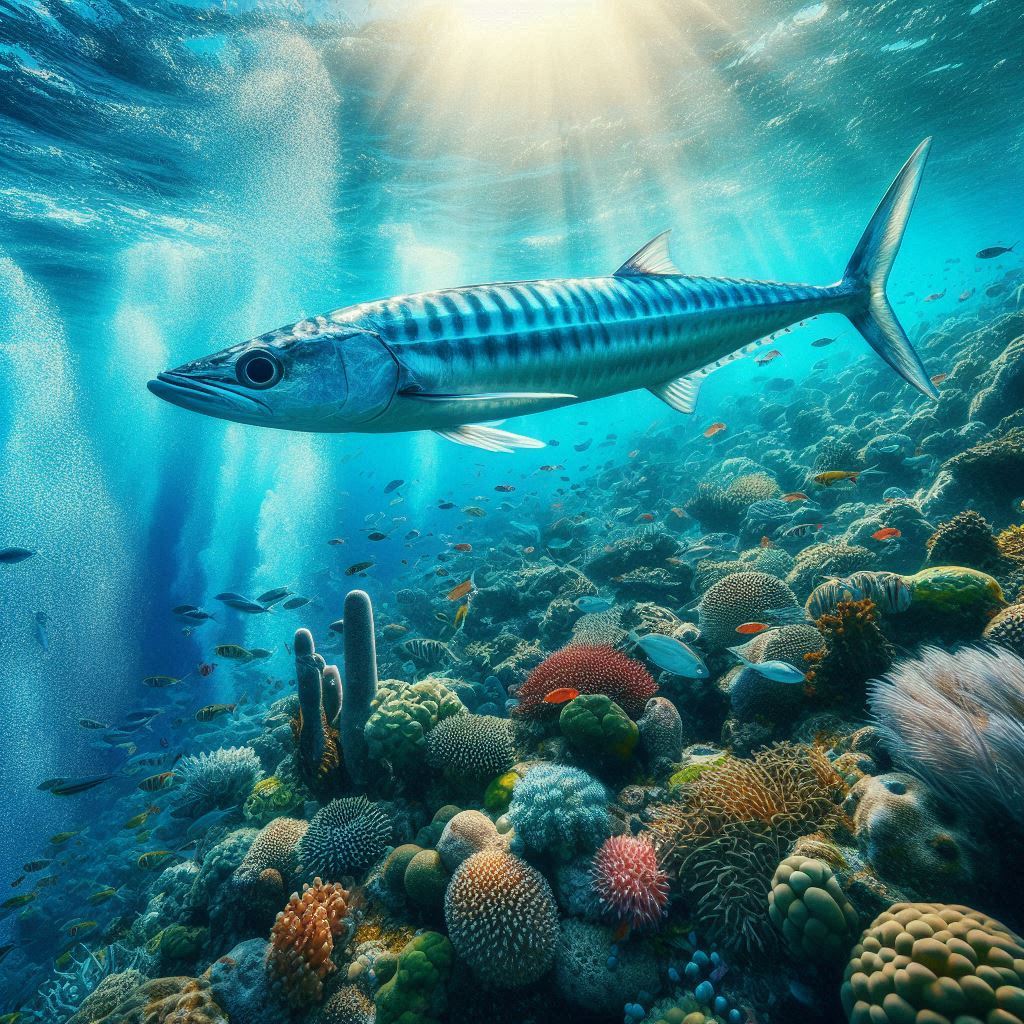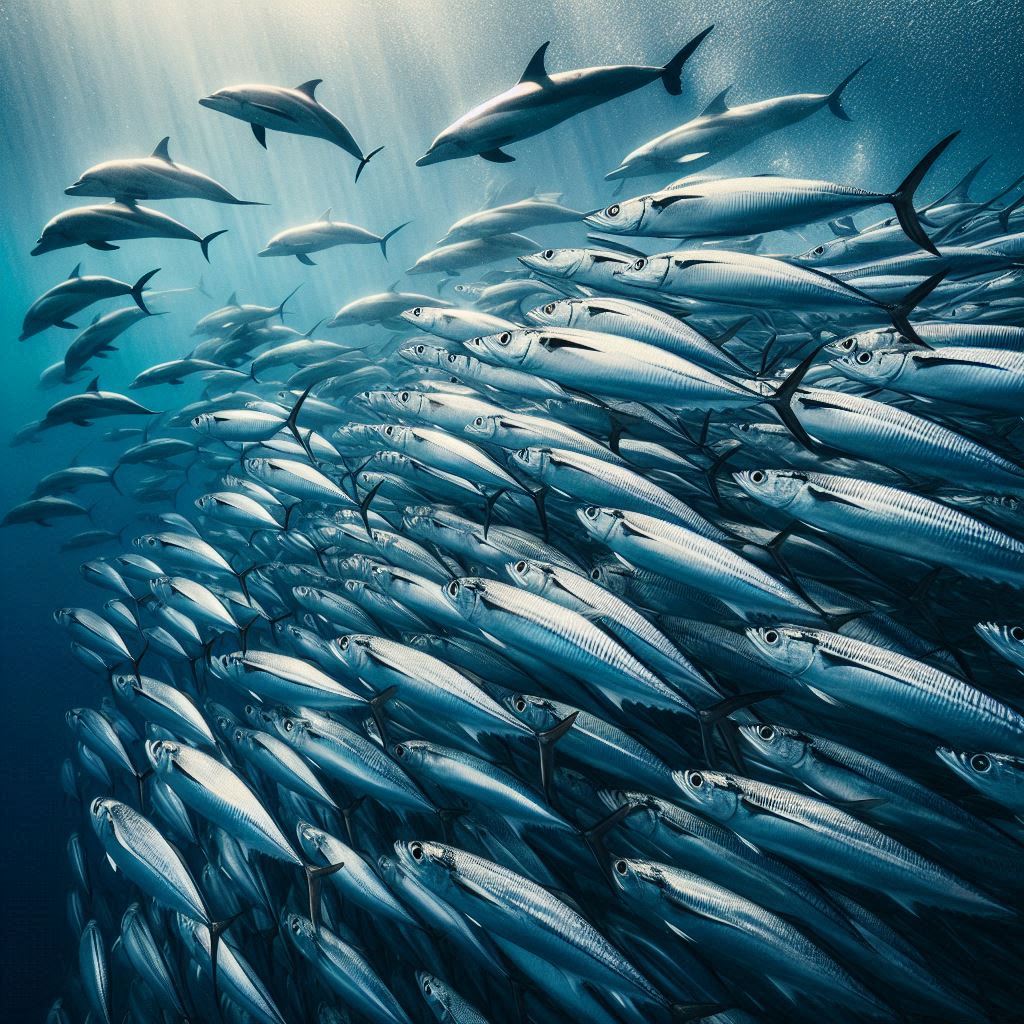Today, we will learn an interesting story about a small but extremely resilient fish – the Pacific Saury (Cololabis saira). Behind the long migration journey of this fish across the vast ocean is a surprising secret in its genes.
First question: How do sauries make this super long migration?
Did you know that sauries not only survive, but are perfectly adapted to a harsh migration route? They travel from tropical waters through the turbulent Kuroshio-Oyashio transition zone, all the way to the subarctic waters – and back again!
The Kuroshio-Oyashio Interchange Zone is an area with large changes in water currents and temperatures. It is a nutrient-rich but challenging area with complex marine environments and the risk of viral and parasitic diseases.
Faced with constant changes in temperature, natural predators, and disease risks, the question is: How did they do it?
Scientists decided to decode this story by studying the saury genome at the chromosome level. The genome of this fish is actually a highly complex maze due to its extremely high heterozygosity.
(a concept in genetics, referring to the degree to which an individual or population has different versions of a gene at the same location on a chromosome)

Revealing the secret in each gene strand
To solve the mystery, the team used cutting-edge technologies like PacBio HiFi and Hi-C (which are just fancy tools for “mapping” the genome). The result? They created two complete saury genomes, measuring 1.1 Gb and 1.07 Gb, respectively—that’s more than 44,000 protein-coding genes.
This is a real treasure trove, as it reveals a host of important genes that help saury cope with harsh living conditions.
Gene Spotlight: “The Immune Warriors”
One of the most exciting discoveries was the expansion of immune genes. Genes like gpr35 and igh were “duplicated” in the saury genome, making them “warriors” against scary parasites and viruses on their migration journey. Think of these little fish as warriors with super genetic armor!
In addition, saury fish have a “repair expert” gene set with genes such as atm and ercc6, which are selected to repair DNA damage caused by oxidative stress during endurance exercise.
Two migration routes, two different genetic stories
Think all sauries are the same? They’re not! Scientists have found genetic differences between two groups of sauries:
- Eastern Group (Eastern Group migrated further east in the Pacific)
- The remaining group is in the Western Pacific (concentrated near shore, moving in the waters of Japan, Korea, and China).
This difference is particularly concentrated on two chromosomes – Chr2 and Chr11 – which contain important genes such as trmu (related to inner ear morphology, which helps them navigate when migrating). These are like two separate genetic “road maps” for each group!

So what can we learn from this fascinating genetic journey?
Lesson from nature: Saury fish have evolved to adapt perfectly to changing environments, showing the amazing power of natural selection.
Practical application: A better understanding of saury genetics not only helps conserve them but also supports sustainable management of fisheries resources.
Genetic discoveries: These genetic traits could be applied to studying other migratory fish species and even aid in coping with climate change.
The story of the Pacific saury shows that every living creature harbors incredible genetic secrets. With its remarkable adaptability and unique genes, the saury is truly a symbol of nature’s resilience and ingenuity.
Let’s celebrate the tireless journey of this little fish – and don’t forget, science is always here to tell us amazing stories like this!
Source of scientific report:
Nature
Liu, Y., Luo, Y., Wang, P. et al. Phased chromosome-level genome provides insights into the molecular adaptation for migratory lifestyle and population diversity for Pacific saury, Cololabis saira. Commun Biol 7, 1513 (2024). https://doi.org/10.1038/s42003-024-07126-0
Several assumptions have been used in the report:
- It is assumed that genetic differences between migratory groups are due to ecological pressures. More data are needed to test this.
- Expanded genes like gpr35 do indeed have a crucial role in immunity and migratory adaptation. This needs further testing.
- Population clustering based on SNP data is sufficient to infer genetic structure. Further gene expression data are needed to support conclusions.

